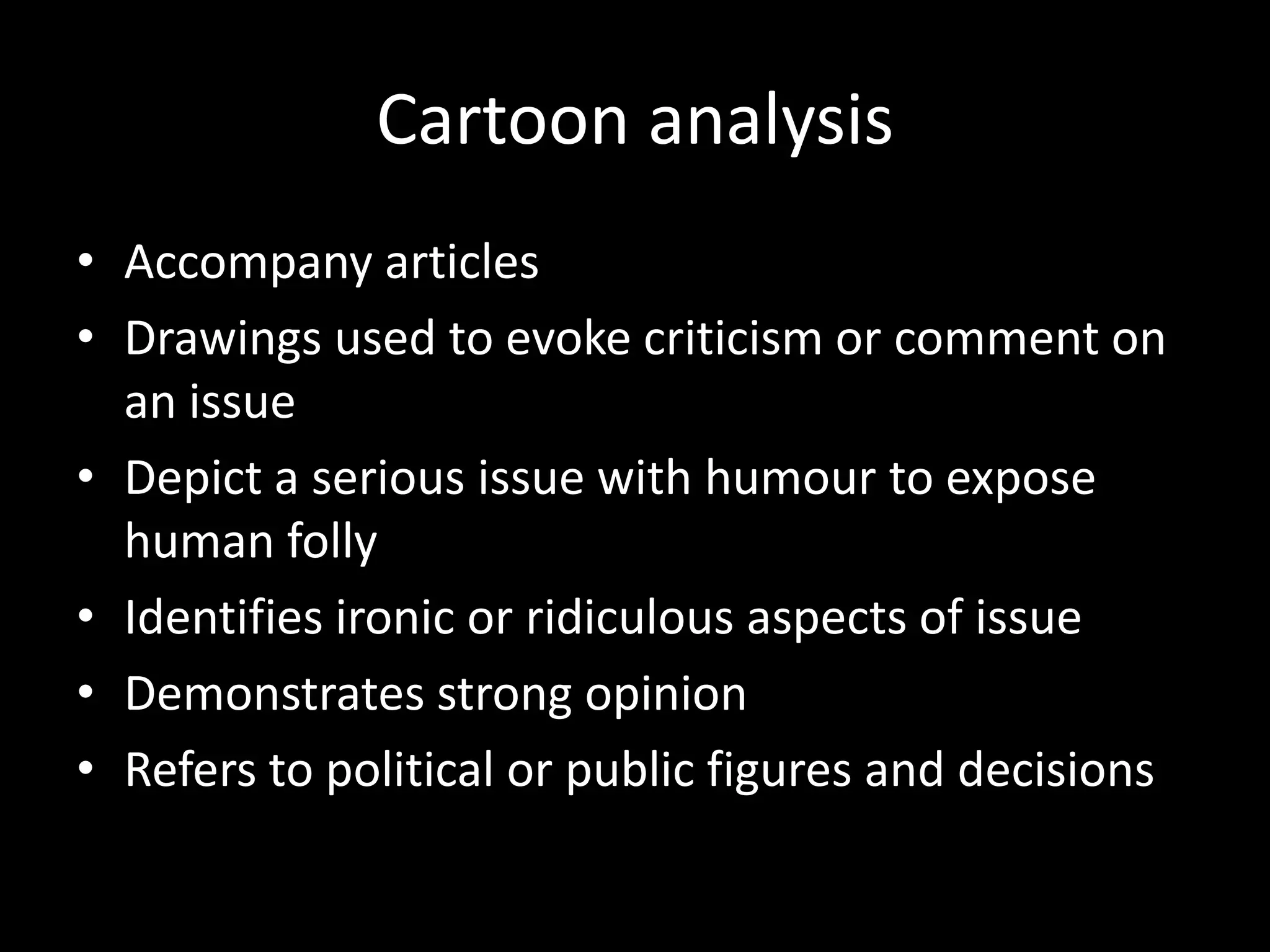This document discusses how cartoons use persuasive techniques to comment on and critique issues. It explains that cartoons accompany articles to evoke criticism through humor. Five main persuasive techniques are described:
Exaggeration of physical features is used to depict characters as foolish. Symbolism illuminates ideas through simple, recognizable objects. Labeling pinpoints important aspects by including names and descriptions. Analogy relates complex issues to more familiar concepts. Irony positions readers to see contradictions by depicting things differently than expected. The document provides examples of each technique and guidance for analyzing cartoons.



















